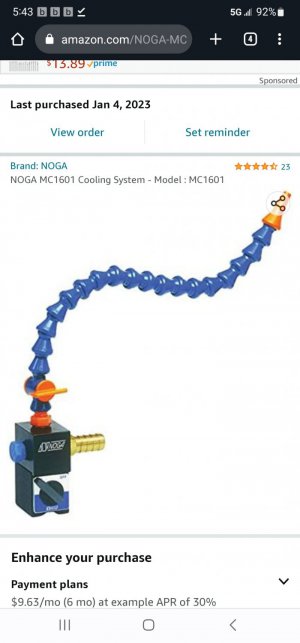There has been a lot of great information shared already so forgive me if this is repetitive. I tried to keep this brief but it is tough.
A couple of notes on successful grinding starting from the beginning.
- The machine must be leveled to a very high sensitivity.
- A .0005"/foot or better level is required.
- The machine table should be inspected for flatness before mounting the chuck
- The table can be ground if it is not within .0002" flatness over the chuck mounting area.
- The chuck must be inspected for flatness/parallelism before mounting.
- If the bottom is not flat, it should be blocked in, top side down and ground flat.
- Blocking it in and shimming any twist/warp will keep from reproducing the same defect.
- Do not use the magnet or clamp to hold it it down.
- Mount the chuck..
- Assemble the rail in order to indicate in straight in the x axis direction
- clamp the chuck, 15 foot pounds on the left and 10 foot pounds on the right.
- This is to allow for heat expansion.
- Magnet on or magnet off?
- Permanent magnets, always on.
- They do not create heat when on.
- Electromagnetic chucks turned on with power reduced to below 30% or off
- They will create heat and the reduced power helps
- Never leave them on at full power for long periods unless you have flood coolant running.
- Electro permanent chucks
- Perform just like Permanent magnetic chucks
- Grinding the chuck (top, bottom or table)
- A course dress is recommended
- Down feed should not exceed .0002"-.0003" (Y-axis)
- Cross feed should be about .050" to .100" per stroke (Z-axis)
- Traverse speed (X-axis) should be fairly rapid
- You will want to do several spark outs
- If you have coolant, use it!
- smearing wax on the chuck between cuts works
- Smearing cutting oil on the chuck between cuts works as well or better.
- Mist coolant works better and flood coolant is best.
- With care, a chuck can be ground dry. Leave electromagnetic chucks off and wait for the surface to cool to ambient between cuts.
I attached some information about wheel selection and dressing. I put this together many years ago so there may be some outdated terminology. If you have any questions, do not hesitate to ask.

